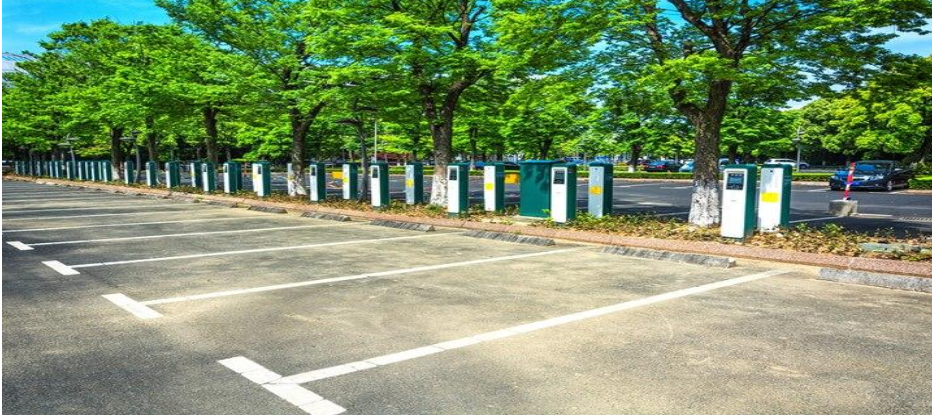The growing adoption of electric vehicles (EVs) makes it imperative for EV chargers to be highly reliable. A well-maintained charging station has an uninterrupted service, keeps the equipment life cycle for a longer duration, and optimizes the user experience. Maintenance is applicable to businesses, property owners, and municipalities that have invested funds to establish EV charging infrastructure as it reduces down time and expensive repairs.
Routine maintenance would be the way to keep an optimal condition. From the public charging network down to home chargers, neglect can lead to malfunctioning units, increased energy utility payment, and stressed users. And practicing the best maintenance practices would not ensure functionality but a safe and efficient operation of EV chargers and adapters.
Typical Problems with EV Chargers
Now coming into the various aspects of EV charging maintenance, first we need to understand the typical problems at EV charging stations:
- Connectivity Issues: Most of the new chargers nowadays utilize internet networks or telecommunication-based connections for monitoring and payment processes. As a result, whenever the connection goes weak, it results in failure or delayed processing of transactions.
- Wear and Tear: Physical damage that is felt on cables, plugs, and screens can occur because of exposure to bad weather, continued use, and mishandling.
- Power Fluctuations: Charger performance can be affected by surges, voltage drops, or even an unstable power source causing slow charging or even failure.
- Software Glitches: Charging stations use software programs for managing the use of charging sessions and billing functions. Without updates, their programs may eventually get bugs or vulnerabilities.
- Accumulation of Dirt: Dust, leaves, and more can jam vents and cooling systems that cause overheating and limit the efficiency.
Soon after identifying these, an action must be taken to prevent expensive breakdowns and costly repairs.
Routine Maintenance on the EV Chargers
To be able to guarantee the reliability and longevity of these devices, it should then come along with a well-structured maintenance program. The following are some of the main steps to effectively maintain such units of EV chargers:
1. Routine Inspections and Cleanings
Routine inspections help in determining the early signs of wear and tear. Do conduct the checks once every month.
- Examine the cables and connectors for cracks, corrosion, and fraying.
- Check the charging station for loose parts or for visible damage.
- Wipe down the charger casing, connectors and display screen with a soft cloth using a non-abrasive cleaner and will remove dust and debris in the vents to avoid overheating.
2 Software Updates and Network Monitoring
Most smart EV chargers have some features that make them dependent on their being software updated for maximum performance.
- Make all the updates automatic so that these are always installed latest for security patches and bug fixes.
- Monitor the network connection, and immediately troubleshoot any connectivity issues.
- Look for any anomalies in transaction and usage logs.
3. Cable Arrangement and Storage
Proper cable handling keeps damage at bay and prolongs usability:
- Do not bend or twist excessively the charging cables.
- Use specific cable management systems to prevent tangling.
- Store cables in dry conditions when not in use so as to prevent moisture damage.
4. Power Supply/Electrical Inspections
The standard becomes either efficient charging or surprises when power comes stable.
- Check out the circuit breakers or fuses for wear marks.
- Ground systems must be intact to avoid electrical hazards.
- Test voltage levels intermittently to confirm the delivery of energy stays stable.
5. Environmental Considerations and Weather Protection
Outdoor chargers are subject to additional risks from their environment.
- Install protective covers or shelters to keep chargers away from harsh weather conditions.
- Water damage is prevented through weatherproof casings and enclosure storage.
- Rust or corrosion formation signs should be treated with protective coatings.
Best Practices for Business and Public EV Charger Operation
In the operation of public charging stations by businesses and municipalities, the application of extra maintenance strategies should be considered:
- Scheduled professional inspections: Perform full inspections at least quarterly with a certified technician.
- User feedback tracking: Have users report problems and possibly book recurring problem availability.
- Remote monitoring system: Get chargers that support remote diagnostics for real-time troubleshooting.
- Warranty and support plans: Ensure that component manufacturer warranties and support agreements are tracked for affordable maintenance.
Signs That An EV Charger Needs Repairs Right Away
Ignoring red flags may eventually lead to a charger non-functional state. If any of the following issues arise, immediate maintenance must take place:
- Slow or intermittent power delivery: Charging periods take longer than ever expected; this may translate to power delivery.
- Error codes appearing often or angry customers: Consistent error codes mean software problems or faulty hardware.
- Physical damage: Exposed wires, cracks, or melted parts endanger safety.
- Funny sounds or excessive heat: Buzzing, heat, or fan failures could suggest internals failing.
The Cost of Not Doing Maintenance
Neglecting maintenance will usually have adverse effects on EV chargers:
Downtime and Loss of Revenue: The broken charging station stands to lose the business of customers that want to be charging there.
Expensive Repairs or Replacements: Tiny things can become very expensive if they are ignored.
Reduce Efficiency and Increase Energy Costs: AWorn-out charger consumes extra energy.
Safety Problems: Electrical failures or naked wires can either cause accidents and/or create fire hazards.
Making EV Charger Maintenance a Priority in Order to Have It Work in the Long Run
Maintaining EV chargers and adapters is key for their long life and optimal performance. Whether it be for home use, commercial charging stations, or public networks, a proactive maintenance program reduces downtime, cost, and user frustration.
Professional service, straight from the manufacturer’s manual, and up-to-date software will actively keep the chargers happy. Provided with a good charging infrastructure, businesses and homeowners will assist the turn towards sustainable transportation while safeguarding their returns.






